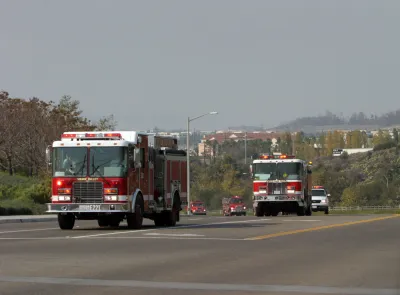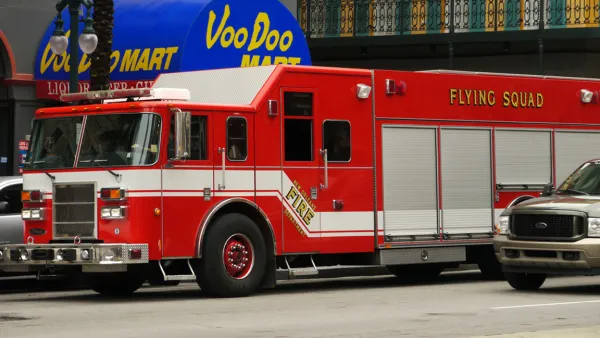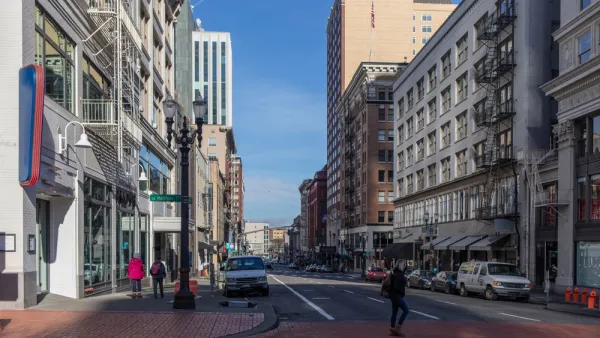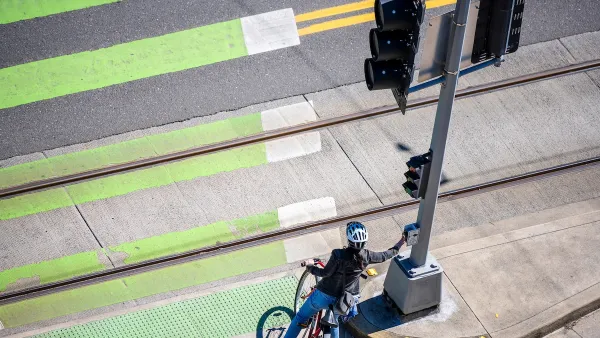A few pioneering fire departments are making room for safety (while demanding less space) on city streets.

An article by Angie Schmidt reports on the early signs of a shift in the politics of street design in the United States. First, the background on the relationship between fire safety and traffic safety:
Fire officials often insist on wide clearance to operate their large vehicles, which can be at odds with the principles of safe street design. When cities want to narrow car lanes or add bike lanes to make streets safer for walking and biking, fire departments often water down or even stop the plans before they can get started. Even though traffic fatalities outnumber fire deaths in the U.S. by more than 10 to 1, fire officials tend to get the final word.
That familiar narrative isn't true in every corner of the country, however, and Schmidt points to Portland, Oregon, "where the Fire Department participates in the street design process led by the city’s Bureau of Transportation," for an example.
The Portland Fire Department's support safe streets doesn't stop during the design process, the Fire Department has followed up by tracking the performance of streets after changes.
“There has been no reduction in response times by working with urban planners and transportation leaders to build out Portland,” [Portland Fire Chief] Myers said on a recent webinar hosted by the National Association of City Transportation Officials.
Schmidt also finds another example in San Francisco, where the city has purchased eight smaller "'Vision Zero' engines made by Ferrara Fire Apparatus that can execute sharper turns than typical American fire trucks," according to Schmidt.
FULL STORY: How Fire Departments Stopped Worrying and Embraced Safer Street Design

National Parks Layoffs Will Cause Communities to Lose Billions
Thousands of essential park workers were laid off this week, just before the busy spring break season.

Retro-silient?: America’s First “Eco-burb,” The Woodlands Turns 50
A master-planned community north of Houston offers lessons on green infrastructure and resilient design, but falls short of its founder’s lofty affordability and walkability goals.

Delivering for America Plan Will Downgrade Mail Service in at Least 49.5 Percent of Zip Codes
Republican and Democrat lawmakers criticize the plan for its disproportionate negative impact on rural communities.

Test News Post 1
This is a summary

Test News Headline 46
Test for the image on the front page.

Balancing Bombs and Butterflies: How the National Guard Protects a Rare Species
The National Guard at Fort Indiantown Gap uses GIS technology and land management strategies to balance military training with conservation efforts, ensuring the survival of the rare eastern regal fritillary butterfly.
Urban Design for Planners 1: Software Tools
This six-course series explores essential urban design concepts using open source software and equips planners with the tools they need to participate fully in the urban design process.
Planning for Universal Design
Learn the tools for implementing Universal Design in planning regulations.
EMC Planning Group, Inc.
Planetizen
Planetizen
Mpact (formerly Rail~Volution)
Great Falls Development Authority, Inc.
HUDs Office of Policy Development and Research
NYU Wagner Graduate School of Public Service





























